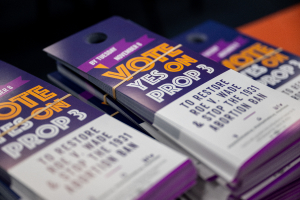Insurance Woes of America
George Wilkins worked at a Tennessee automotive plant for 25 years before the plant closed, leaving him unemployed and his three children uninsured.
He spent the next year looking for a job and an affordable insurance policy to protect his family but kept running into roadblocks because of finances, pre-existing conditions and denial letters from insurance companies.
“I finally landed a job but it does not offer insurance coverage so the premiums have to come out of my paycheck,” Wilkins said.
“It is not a very good policy but it is something. I worry every day that something bad will happen to my family and we will be facing a disaster.”
Wilkins provides a personal narrative that represents far too many individuals trapped in the same cycle.
Uninsured and even the underinsured families already struggle financially to meet basic needs, and medical bills, even for minor problems, can quickly lead to medical debt.
This scenario leads to unhealthy living and also leaves the hospitals holding the bag.
Uninsured families can usually pay only about 12 percent of their hospital bills, and families with incomes above the poverty level, or about $88,000 a year for a family of four, pay about 37 percent of their hospital bills in full, according to a study issued by the Department of Health and Human Services this month.
When lawmakers talk about our health care system, they repeat grim statistics of the number of uninsured and underinsured Americans as one of the primary problems in need of a solution.
Along with a battered economy, thousands of stories follow that tell the same tale of foreclosures, unemployment, insurance problems and a host of financial worries.
The number of people without health insurance rose sharply last year to 50.7 million, which was an all-time high, according to the Census Bureau.
Many Americans have started personal blogs about the health care problems facing the nation.
“An individual who needs medical care has no bargaining power whatsoever with a hospital,” said one blogger on the “America’s Uninsured” website.
The blog, which is read by thousands, said that patients “can either agree to pay whatever he is charged, or he can die.”
“Many people I know have opted for those major medical plans that offer cash if someone in the family is hospitalized,” said Dr. Ryan Lowe, a retired physician from Shreveport, La.
“This completely defeats the point of wellness checkups and preventative medicine to keep our country healthy.”
According to the Institute of Medicine, “lack of health insurance causes roughly 18,000 unnecessary deaths every year in the United States. Although America leads the world in spending on health care, it is the only wealthy, industrialized nation that does not ensure that all citizens have coverage.”
This is a scary number of people that die each year from the lack of financial means in the United States.
“Our lawmakers need to jump in a make these insurance companies change their ways,” said Lowe.
“Over the years I treated many patients that did not have insurance just because they needed it. I have seen some tragic stories lately and it boils down to multi-million insurance companies working against the average American. They do not really want to help them.”
According to the Kaiser Commission, there are now nearly as many uninsured non-elderly people as those receiving Medicaid or other public insurance such as CHIP, the children's insurance program, Medicare and military/veterans coverage.
The gaps in our health care system affect people of all ages, races and ethnicities, and income levels; however, those with the lowest income face the greatest risk of being uninsured.
This is a dismal picture indeed, but there is hope on the horizon. Lawmakers are taking baby steps within our government health programs and edging Americans closer to some help.
The U.S. Department of Health and Human Services on Tuesday announced new steps to reduce premiums and make it easier for Americans to enroll in the Pre-Existing Condition Insurance Plan.
Applicants will no longer have to wait on an insurance company to send them a denial letter.
This means that premiums for the Federally-administered Pre-Existing Condition Insurance Plan (PCIP) will drop as much as 40 percent in18 States, and eligibility standards will be eased in 23 states.
“The Pre-Existing Condition Insurance Plan changes lives, and in many cases, literally saves lives,” said HHS Secretary Kathleen Sebelius. “These changes will decrease costs and help insure more Americans.”
This option became available to children under age 19 in February, and this pathway is being extended to all applicants regardless of age. Applicants will still need to meet other eligibility criteria, including that they are U.S. citizens or residing in the U.S. legally and that they have been without health coverage for six months.
Sebelius said the Pre-Existing Condition Insurance Plan was created under the Affordable Care Act and serves as a bridge to 2014 when insurers will no longer be allowed to deny coverage to people with any pre-existing condition, like cancer, diabetes, and asthma.
As Congress and the president debate different approaches to reducing the deficit, initial public reaction is fairly evenly split when a premium support/voucher program like the one in House Budget Committee Chairman Paul Ryan’s "Path to Prosperity" proposal is described, but seniors prefer to keep the current Medicare system by a 2‐to‐1 margin, according to a recent report issued by the Kaiser Health tracking polls.
Meanwhile, public opinion on the health reform law remains remarkably steady.




























